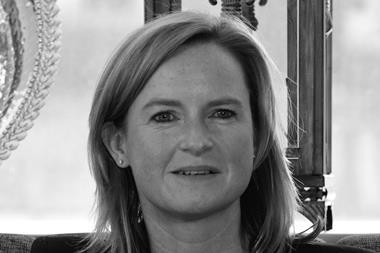“We shape our buildings; thereafter they shape us.” So said Winston Churchill and, more than 70 years on, it’s a maxim that is worth remembering.
London’s identity is shaped by its rich heritage of landmark architecture, from the Tower of London to St Paul’s Cathedral to the Houses of Parliament.
When we shape a building, we also have the potential to shape a community and to ensure that the building’s legacy is a positive one for the surrounding area.
That has a responsibility we take seriously and is evident in our ongoing transformation of Victoria in west London. 62 Buckingham Gate (pictured), The Zig Zag building and Nova have all been designed to showcase the best in architecture and individuality, while also forming a vibrant, cohesive community with increased public space, greenery and amenities.
Buildings also have the potential to dramatically affect the way we work. It is long been recognised that flexible working, enabled and encouraged by mobile technology, is growing; break-out areas and open-plan offices are the norm. But, as we develop the office buildings of the future, it is the way the building can shape its occupiers that will be crucial to its success. That means ensuring creativity, health, wellbeing and happiness are embedded in buildings right from the construction phase.
Le Corbusier said “a house is a machine for living in”. The way we see it, an office is a machine for working in. We aim to build powerful machines for better business, so that all our customers need to do is add talent. When you start to look at what a building must offer to attract that talent, it is clear that buildings must have the potential to transform a business.
Le Corbusier said “a house is a machine for living in”. The way we see it, an office is a machine for working in.
Location is key that is nothing new — as are the surrounding community amenities. But so too are cycling facilities — easy access to plenty of showers, changing areas, lockers and drying facilities as well as cycle parking.
The quality and availability of workplace cycle facilities influenced the career choices of more than half of respondents in a British Council of Offices report called Cycling and the Modern Workplace.
We all recognise the benefits of fresh air and sunshine and research by Desktime, a web application supplier that measures workplace productivity, shows that comfortable, well-ventilated, well-lit, safe workplaces increase productivity by as much as 16%. That is one of the reasons The Zig Zag building, which is due to complete later this year, will provide filtered air, higher-than-average ceilings and opening windows.
Corporate social responsibility is ever higher on the corporate agenda and can be an influencing factor for those considering a career move. The CFO Survey Europe Report for the second quarter 2013 revealed that 35% of European companies cited improving employee morale, hiring and retention and overall internal goodwill was one of their top three reasons for adopting CSR objectives. Land Securities is one of the few developers to achieve environmental standard ISO 14001 across all our operations, covering everything from rainwater recycling to energy efficiency.
To ensure that a building’s legacy is a positive one, we have to ensure that efficiency, technical resilience, creativity and well-being are built in from day one. That way, as the building we shaped starts to shape us, we can be confident it is shaping the best talent into the most productive workforce it can be.
Colette O’Shea is managing director, London, at Land Securities and a speaker at the BCO’s annual conference from 14-16 May




























No comments yet